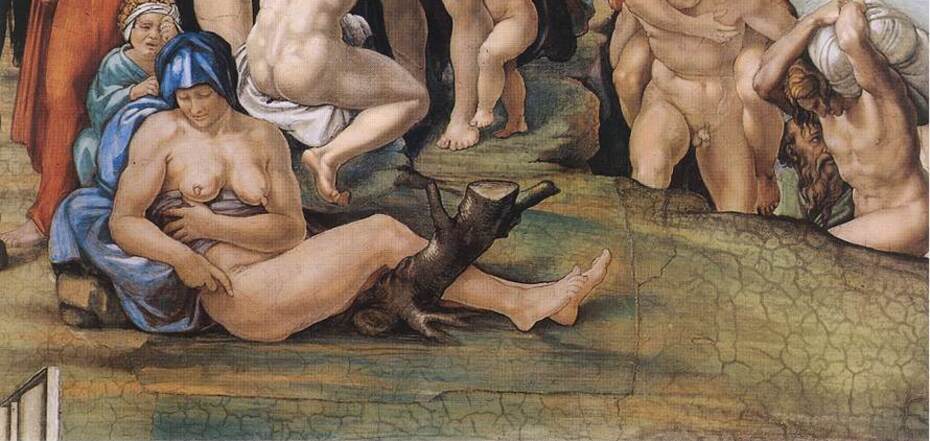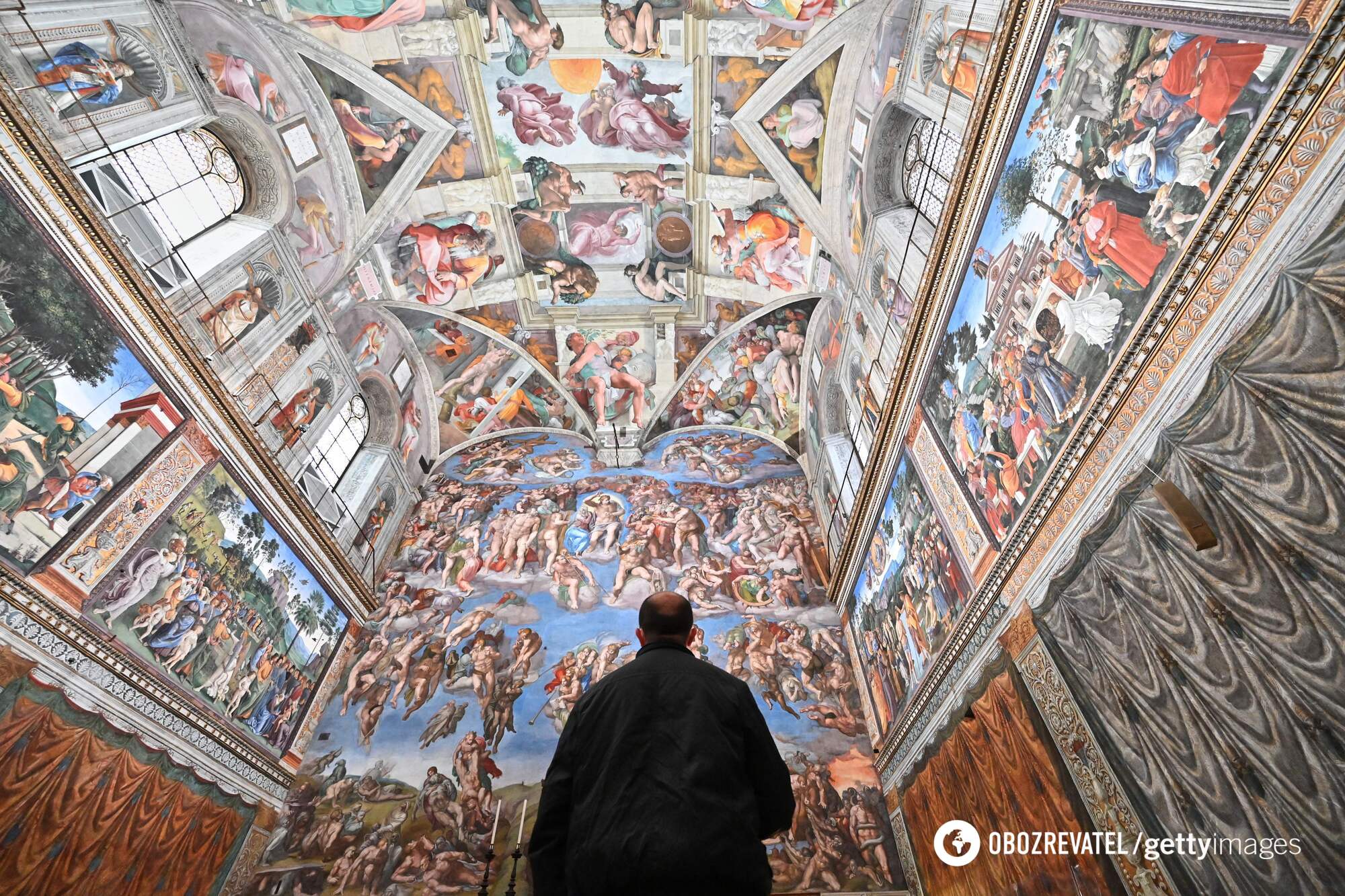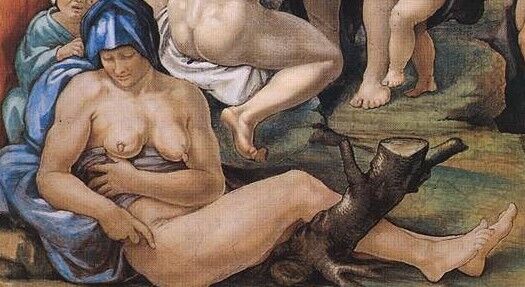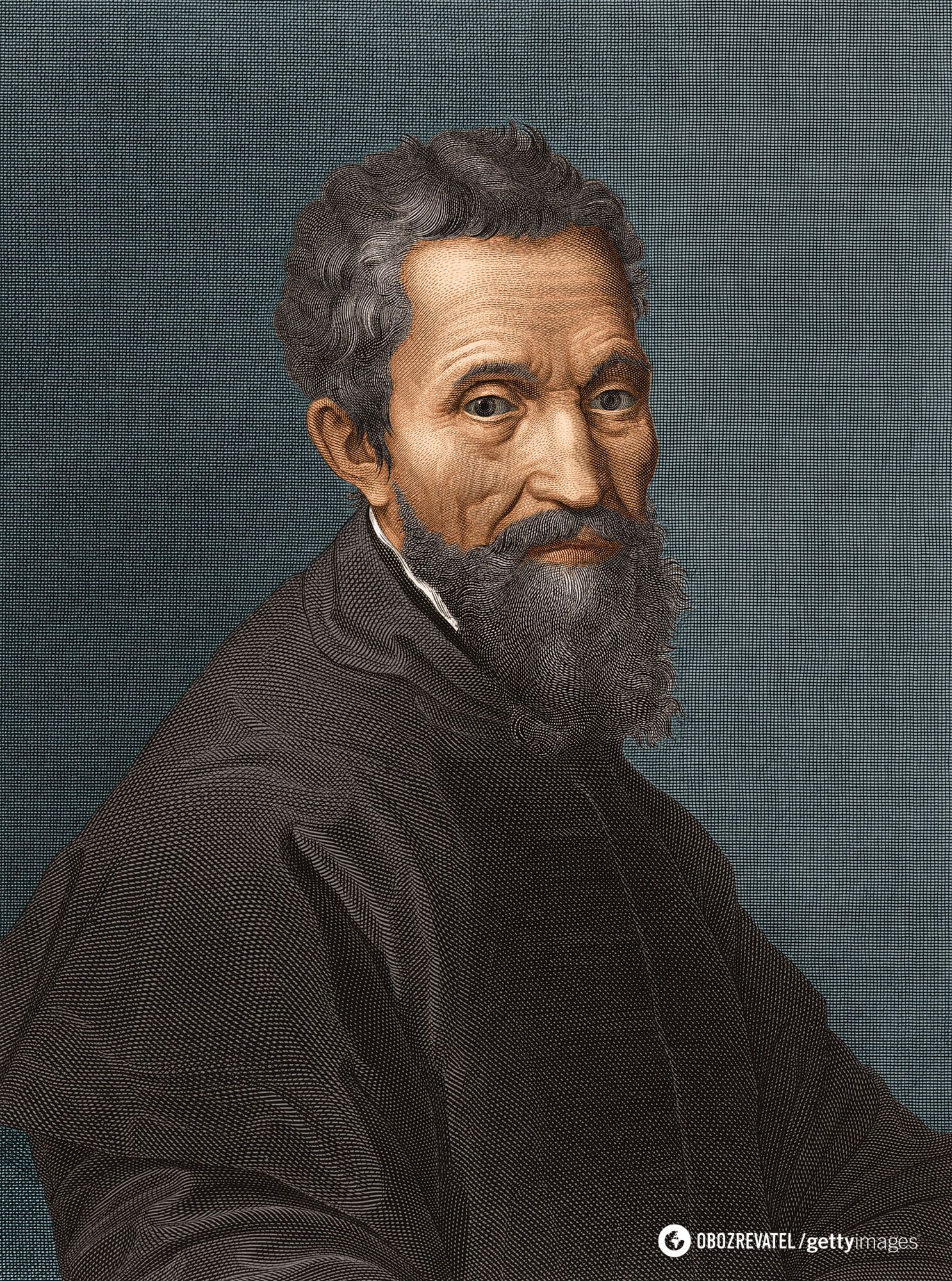News
On Michelangelo's fresco "The Flood," scientists have noticed breast cancer in a woman. Photo
Researchers at the University of Paris-Saclay have noticed signs of breast cancer in a woman depicted in a work by the High Renaissance and early Baroque genius Michelangelo Buonarroti. An unexpected discovery was made in the Flood fresco.
One of the masterpieces of the Sistine Chapel shows a woman with a deformed nipple and unnaturally convex breasts. Researchers believe that the depiction of breast cancer in Michelangelo's iconic work could be a message about the inevitability of death, writes DailyMail.
Michelangelo began painting frescoes in the Sistine Chapel in 1508 after an order from Pope Julius II. According to religious scholars, the key theme in these murals is the story of Genesis in the Old Testament, where the "Great Flood" depicts a group of people fleeing from the incoming water.
The left side of the fresco depicts a young nude woman covered only by a headscarf and cloak. While studying this masterpiece by the Italian artist, researchers noticed that her left breast shows several signs of breast cancer.
"Michelangelo's depiction of the Flood shows the characteristics of breast cancer. The evidence of the pathology is fully supported by the symbolism and theological significance underlying this image of life and death," said the researchers from the University of Paris-Saclay.
Scientists have seen clear signs of a serious disease in the fresco. "The contrast with the right breast is obvious. Although her right arm is slightly raised, the nipple is significantly retracted and deformed. The areolar skin is retracted, the medial part of the areola seems to be eroded, the skin from the nipple is deeply retracted, which looks like a scar. No obvious ulcer is seen. However, in the upper medial quadrant, a small bulge is visible, corresponding to a "lump," the scientists led by Andreas Nerlich wrote in detail.
The research team notes that Michelangelo began helping specialists in autopsies when he was 17 years old. Therefore, he most likely saw cases of breast cancer.
Scientists have several theories as to why the artist decided to highlight this disease in the fresco. One of them suggests that people fleeing the flood may symbolize the seven deadly sins. And this woman represents lust.
"There are several types of people who 'personify' the seven deadly sins: gluttony and laziness (the man with the barrel), anger (people fighting in the boat), greed (the woman carrying her household goods). All these details point to the reasons for their punishment. Perhaps breast cancer can be a personal punishment for lust," experts suggest.
Depiction of breast cancer may be linked to the concept of death, scholars say. "As an expression of Neoplatonism, the pursuit of beauty and harmony could lead to immortality, while physical disfigurement or illness was an expression of the spiritual abyss. characters This metaphor should be taken into account when a woman raises her breasts so that the viewer can see it clearly. Michelangelo's characters are painfully aware of their fate," the team of researchers summarized.
Only verified information is available on the OBOZ.UA Telegram channel and Viber. Do not fall for fakes!































